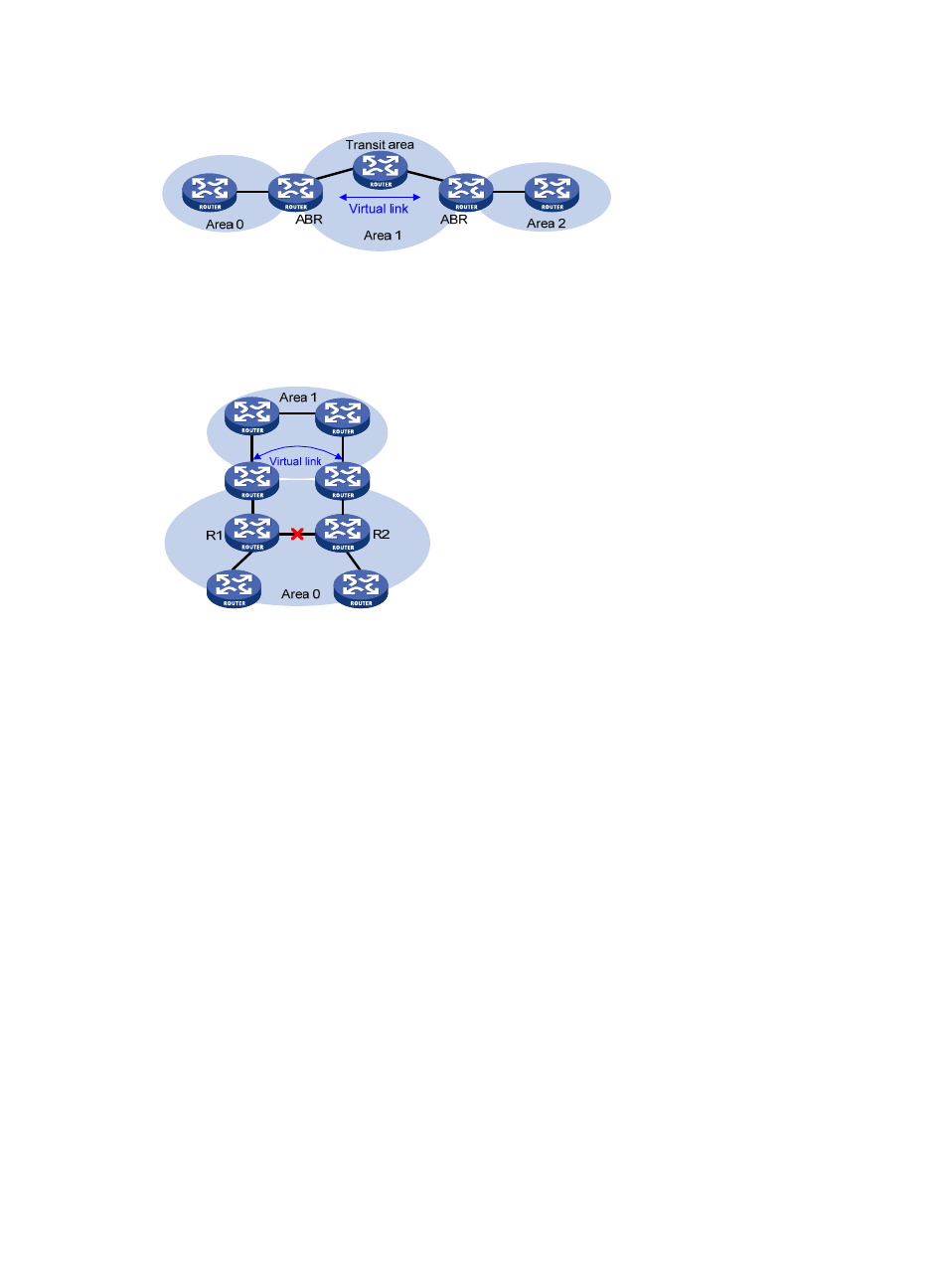Stub area, Figure 18 – H3C Technologies H3C S12500 Series Switches User Manual
Page 74

58
Figure 18 Virtual link application 1
Virtual links can also be used to provide redundant links. If the backbone area cannot maintain internal
connectivity due to the failure of a physical link, you can configure a virtual link to replace the failed
physical link, as shown in
Figure 19 Virtual link application 2
The virtual link between the two ABRs acts as a point-to-point connection. You can configure interface
parameters, such as hello packet interval, on the virtual link as they are configured on physical
interfaces.
The two ABRs on the virtual link exchange OSPF packets with each other directly, and the OSPF routers
in between simply convey these OSPF packets as normal IP packets.
Stub area
A stub area does not distribute Type-5 LSAs to reduce the routing table size and amount of routing
information in this area.
To further reduce the routing table size and the amount of routing information in this area, you can
configure the stub area as a totally stub area. The ABR of a totally stub area does not advertise inter-area
routes or AS-external routes.
(Totally) stub area configuration is optional, and not every area is eligible to be a stub area. In general,
a stub area resides on the border of the AS. The ABR of a stub area advertises a default route in a Type-3
LSA so that the routers in the area can reach external networks through the default route.
Note the following when you configure a (totally) stub area:
•
You cannot configure the backbone area as a (totally) stub area.
•
To configure an area as a stub area, issue the stub command on routers attached to the area.
•
To configure an area as a totally stub area, issue the stub command on routers attached to the area,
and issue the stub [ no-summary ] command on the ABR of the area.
•
A (totally) stub area cannot have an ASBR because AS external routes cannot be distributed into the
stub area.